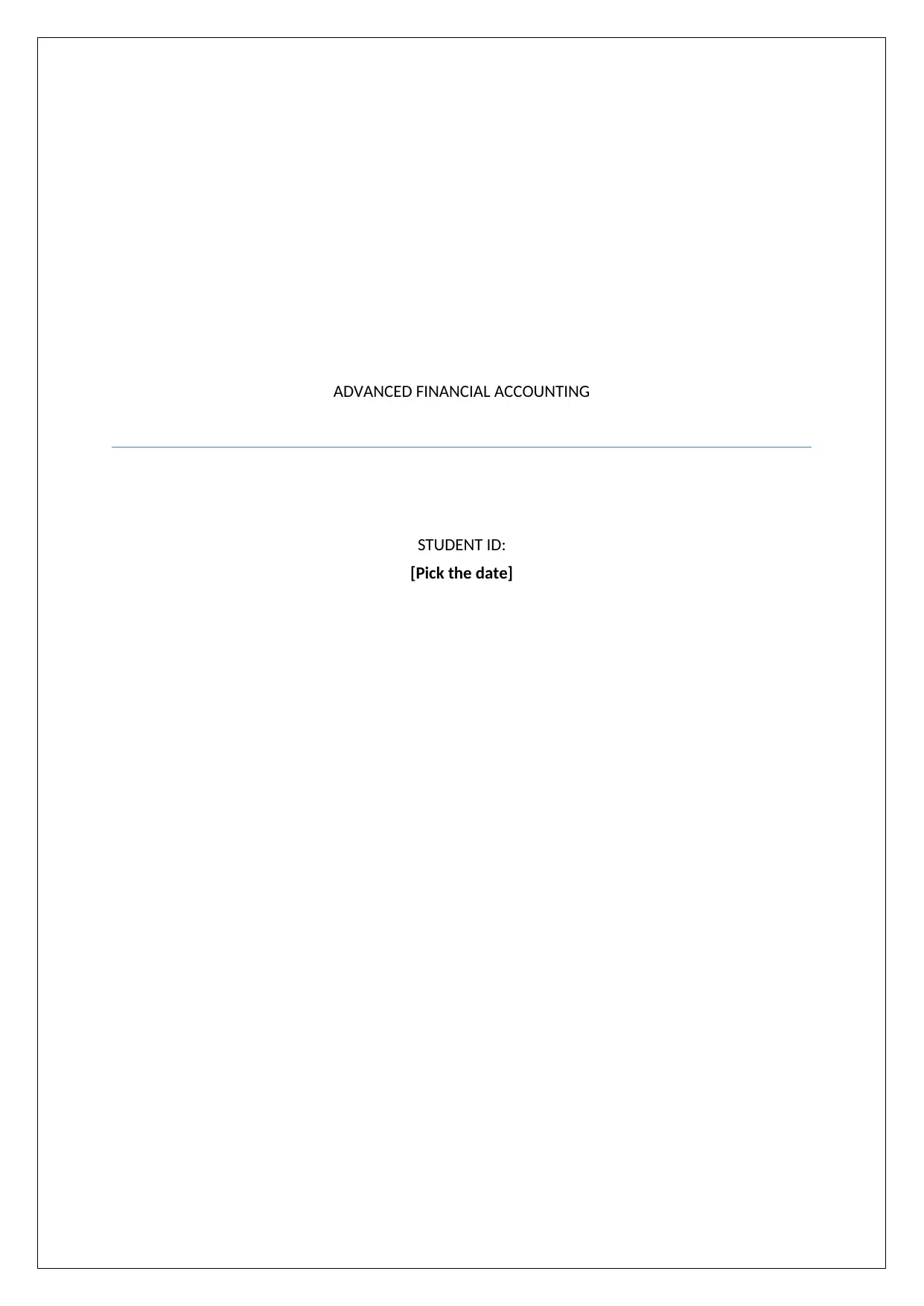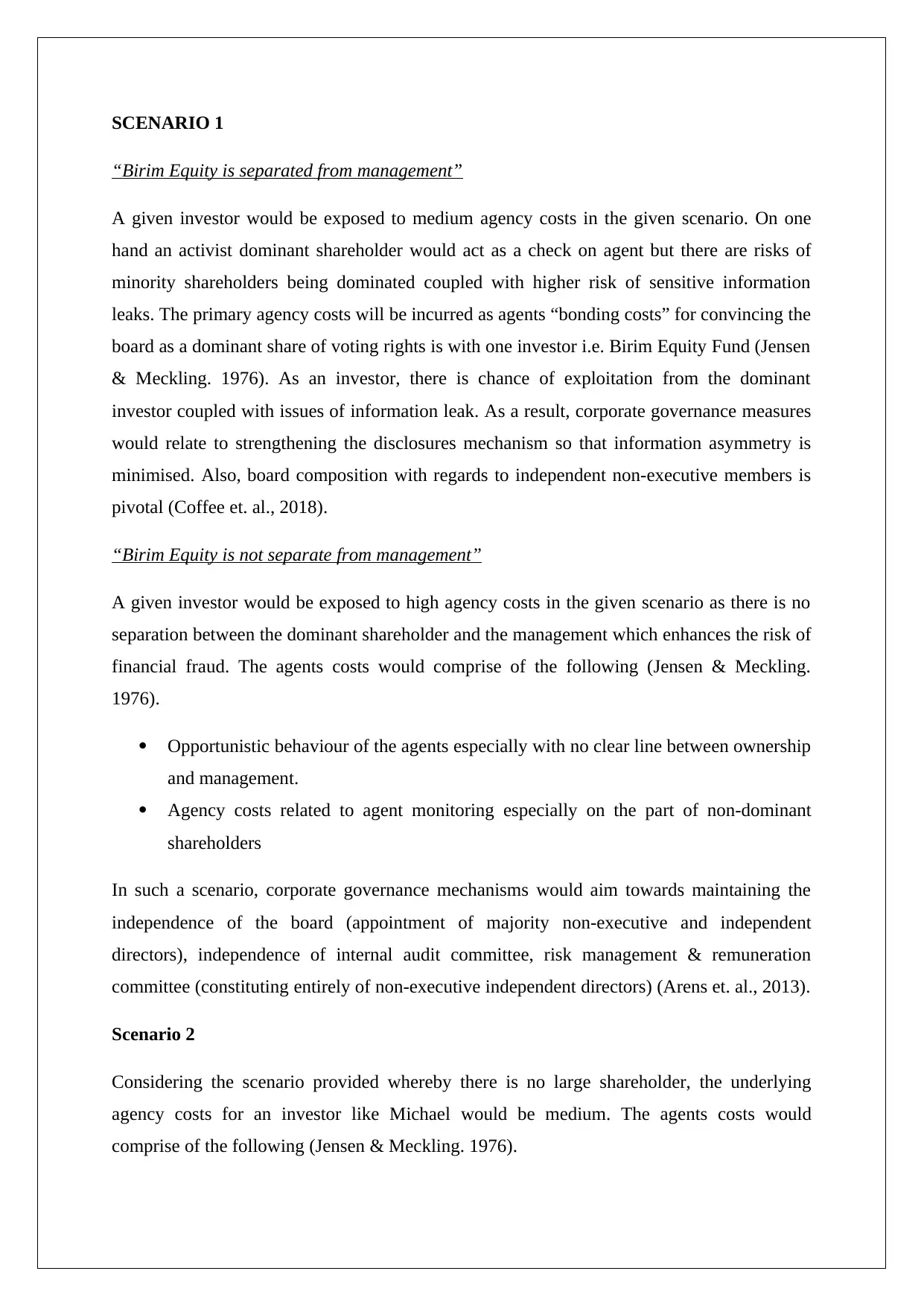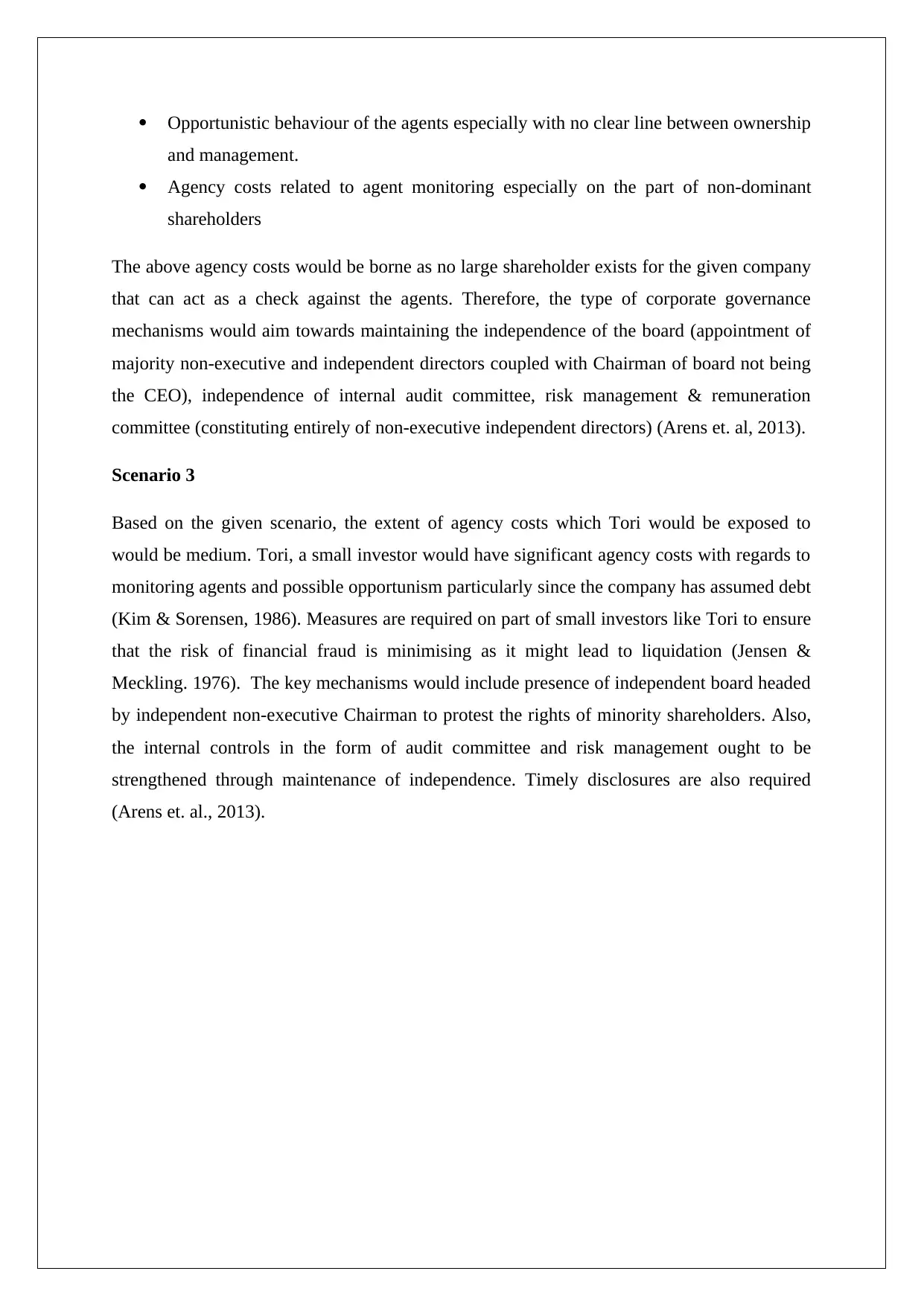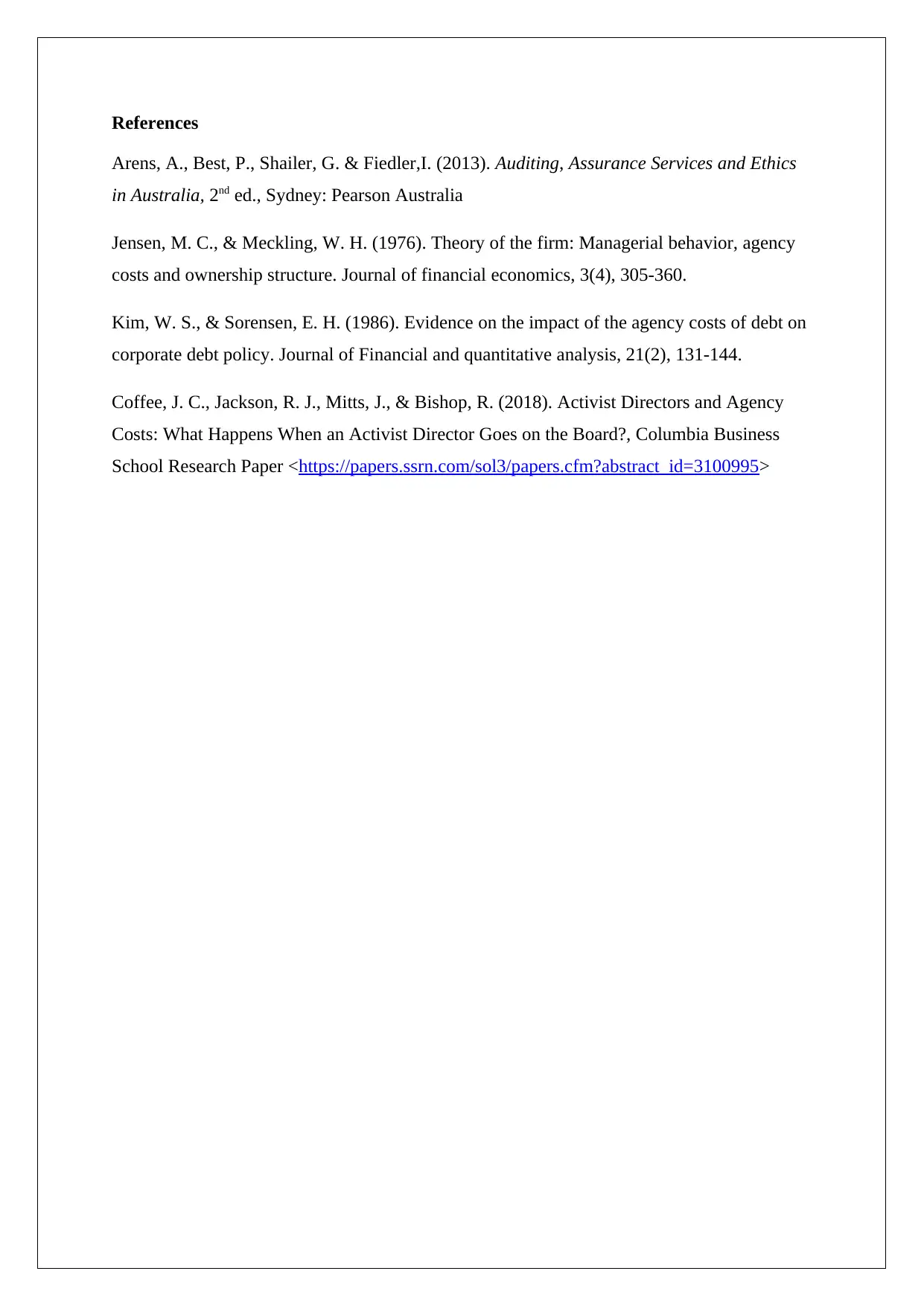Advanced Financial Accounting: Agency Costs and Governance Analysis
VerifiedAdded on 2023/06/04
|4
|798
|53
Essay
AI Summary
This essay provides an analysis of agency costs in different scenarios, drawing upon the work of Jensen and Meckling (1976), Kim and Sorensen (1986), and Coffee et al. (2018). It examines how agency costs arise from the separation of ownership and management, the potential for opportunistic behavior by agents, and the exploitation of minority shareholders by dominant ones. The essay further explores appropriate corporate governance mechanisms to mitigate these costs, such as strengthening disclosure mechanisms, ensuring board independence, and establishing independent audit and risk management committees. Specific scenarios are considered, highlighting the varying levels of agency costs investors may face depending on the ownership structure and the presence of debt, emphasizing the importance of robust internal controls and timely disclosures to protect shareholder rights. Desklib offers a range of solved assignments and study resources to aid students in understanding these complex financial concepts.
1 out of 4









![[object Object]](/_next/static/media/star-bottom.7253800d.svg)